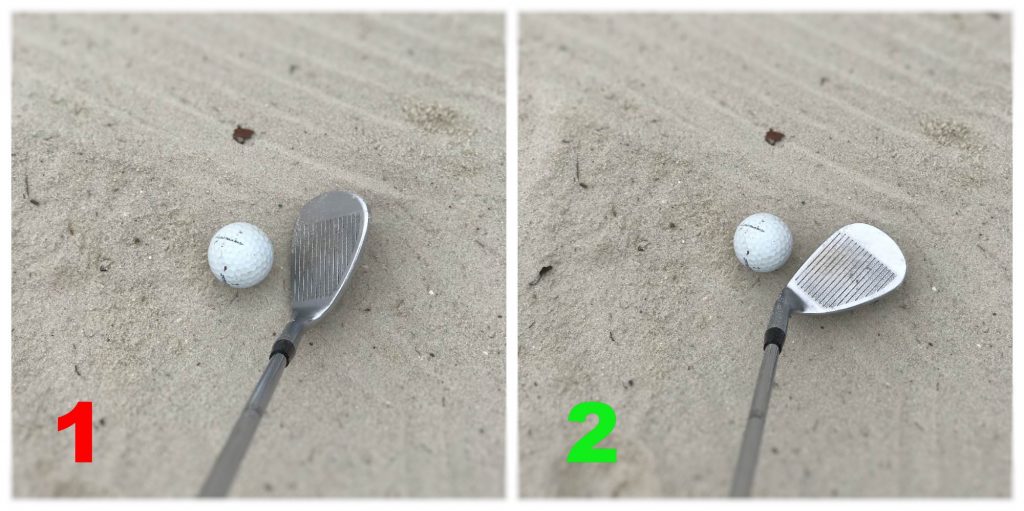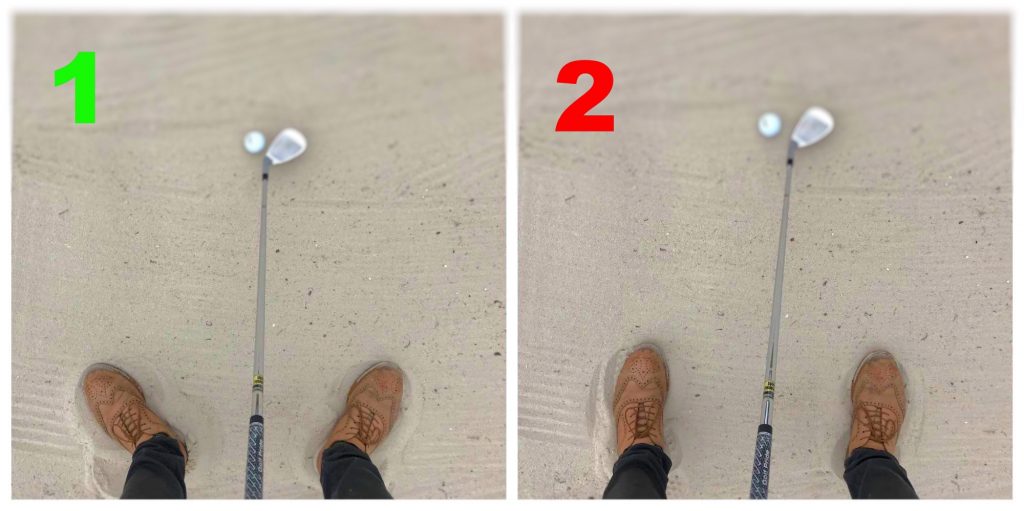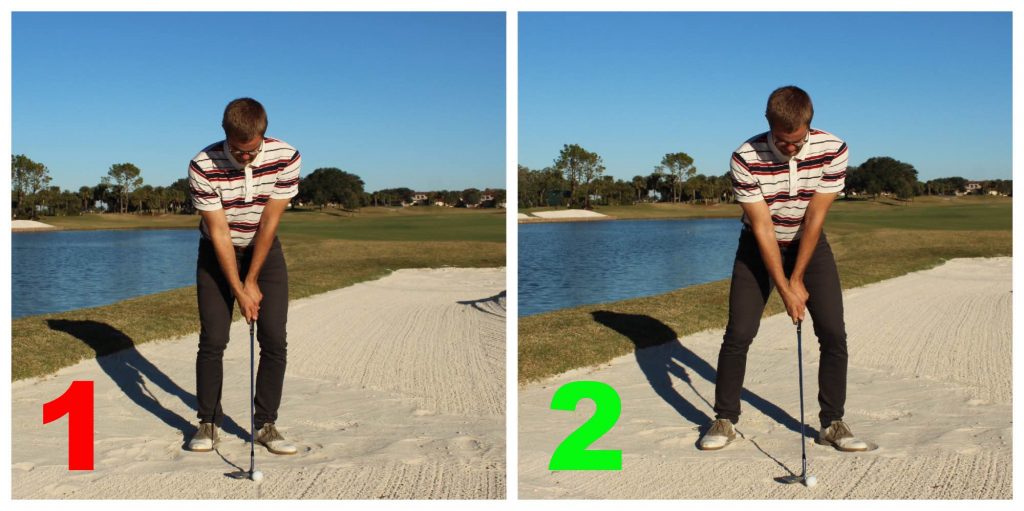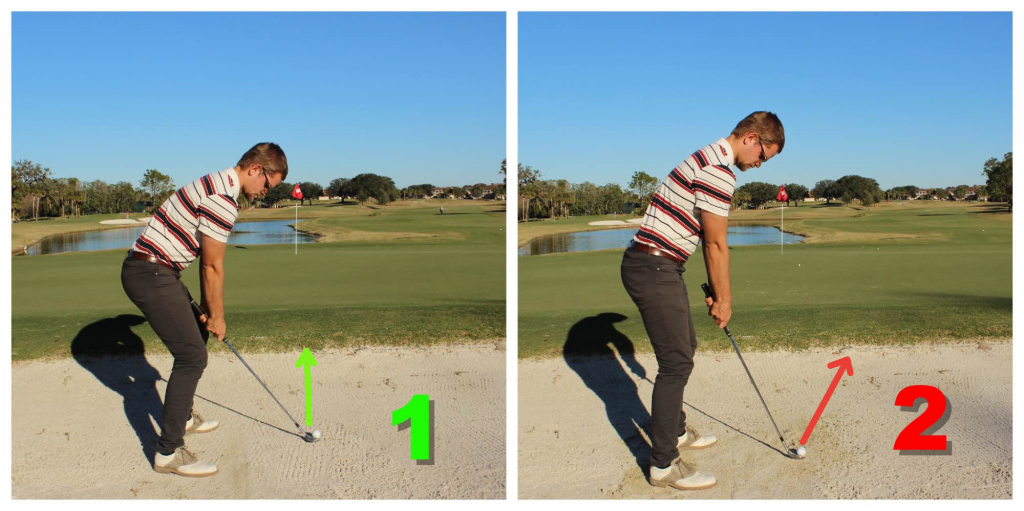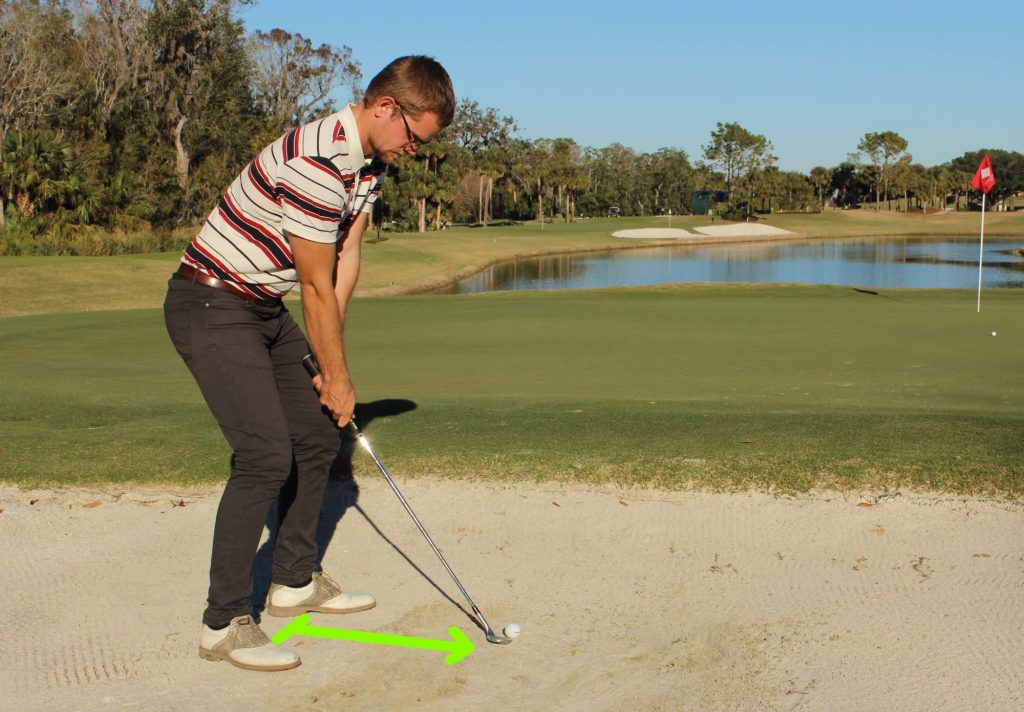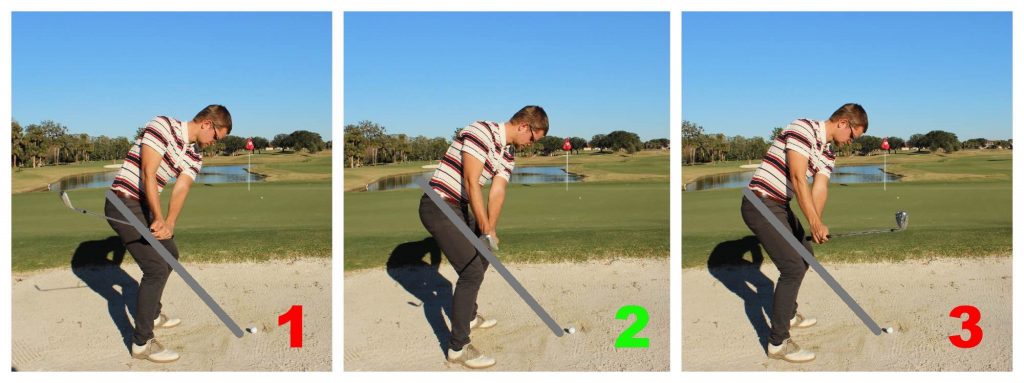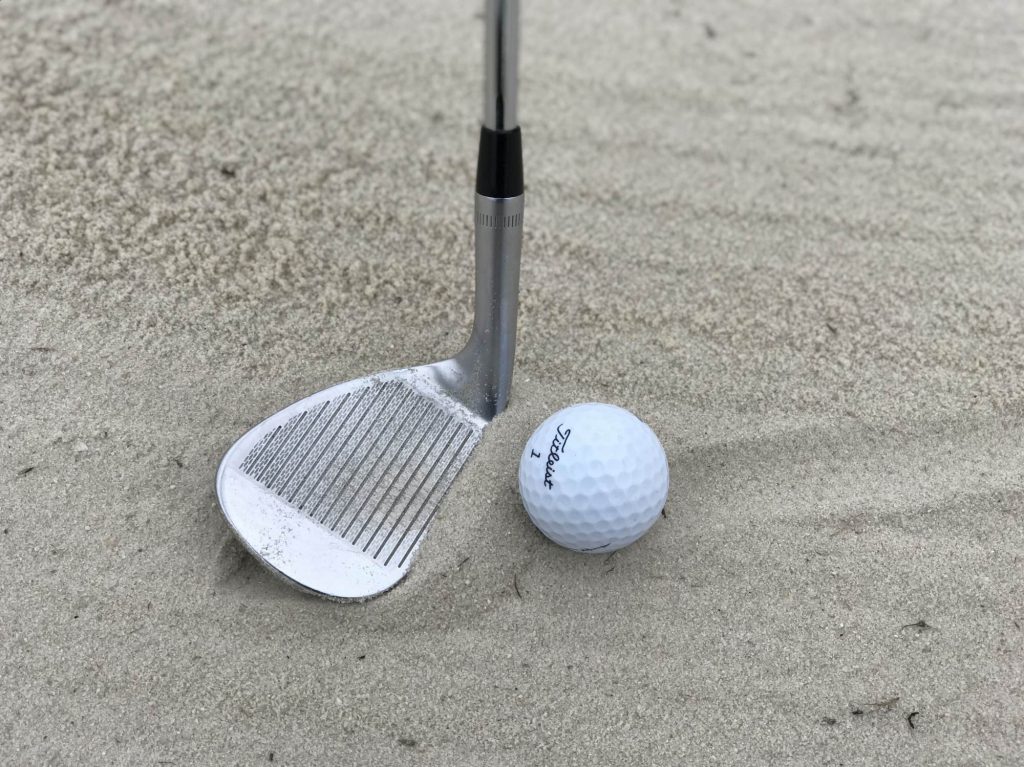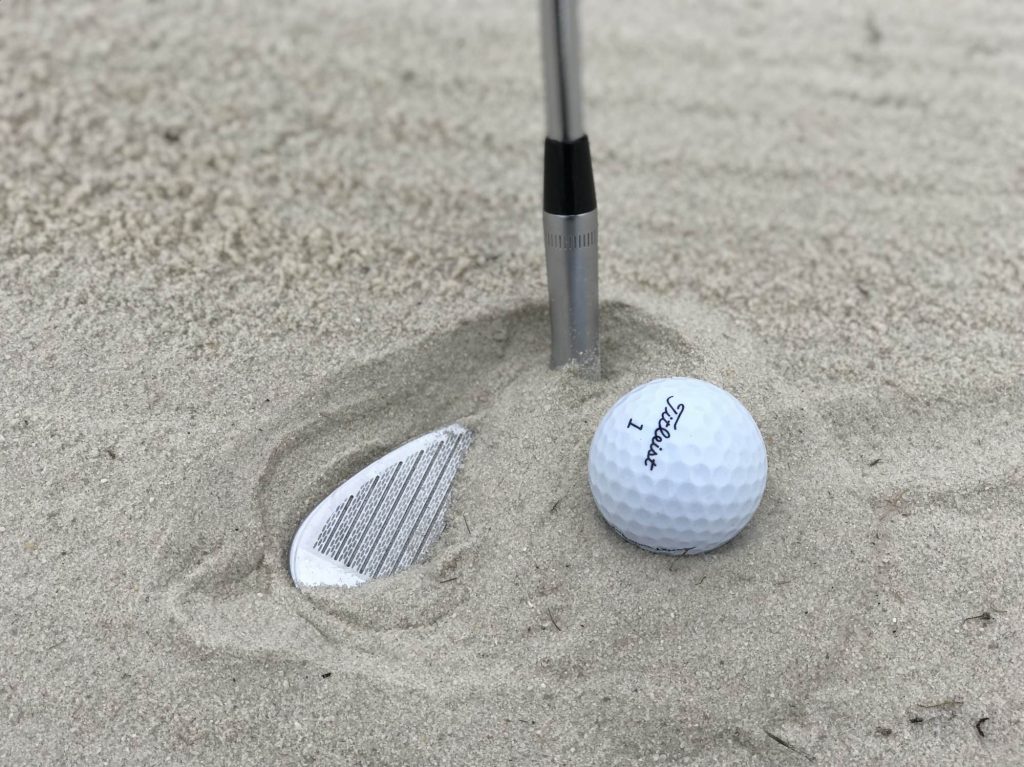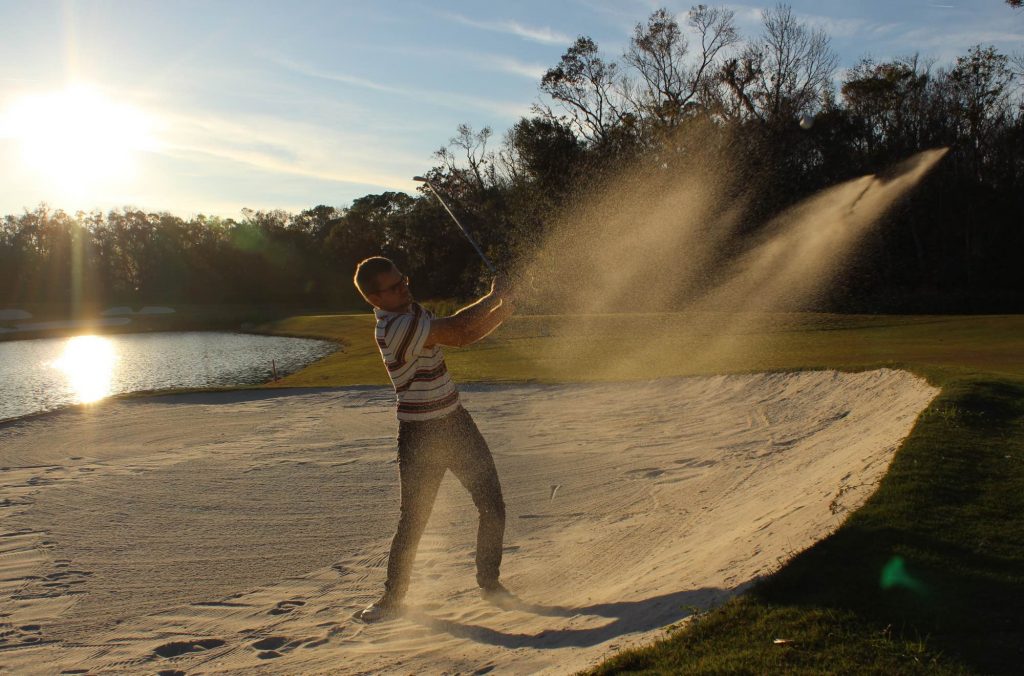- +4527976587
- mail@worldofshortgame.com

15 Most Important Bunker Shot Basics You Must Know
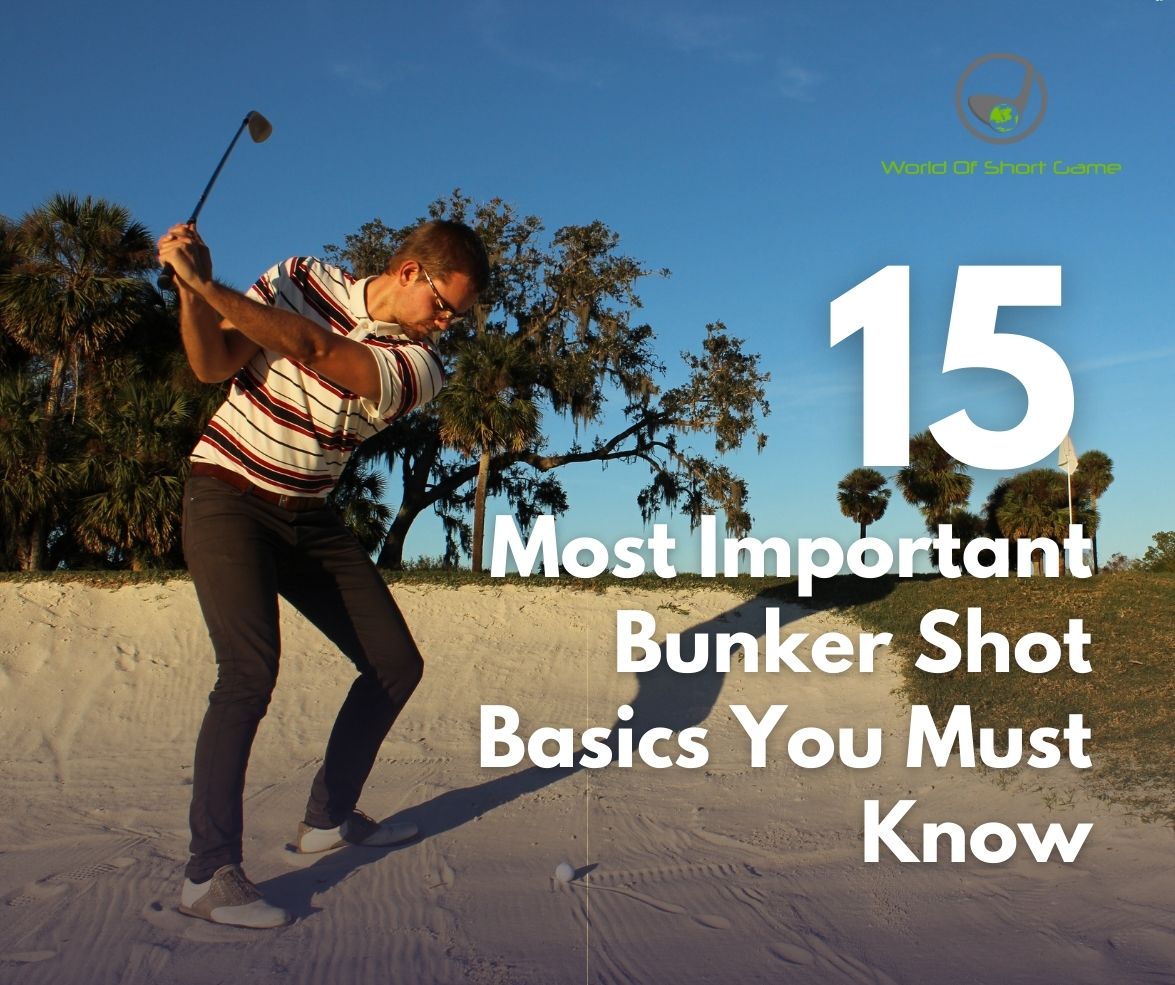
15 Most Important Bunker Shot Basics You Must Know
15 Most Important Bunker Shot Basics You Must Know
Do you know that nervous felling when standing over the ball in a bunker? Praying to god that you wont blade it, shank it or chunk it. Let me tell you at once, that you are not alone.
In this post I am going to teach you the 15 most important bunker shot basics, that will show you how to get the ball nicely out of the bunker, every single time. Read it closely and carefully because all of the bunker shot basics have the potential to change your bunker play forever.
Looking to improve your short game? I'm currently offering online lessons through the Skillest app with a 50% discount on your first lesson for all readers of the World of Short Game blog. Simply use the promo code "WOSG50percent" when booking your first session to get started at a discounted rate. Let’s work on your game together! ⛳️
1. Let the clubface shine
The first basic in the bunker, is how you hold the clubface at setup. A bunkershot is about making the club glide over the sand. In order for that to happen you need the club to hit the sand with the widest part of the clubhead. This part is what is called the sole of the club (read this article if you want to learn what the sole is). If you open up the clubface at setup the sole will be exposed a lot more, and by that there is a greater chance of this part of the club to hit the sand first. Other advantages of an open clubface is:
• This allows you to hit the ball with higher club speed, and it is easier to make the club glide over the sand with a higher club speed.
• An open clubface adds a lot of height to the bunkershot which is usually a good thing from a greenside bunker.
• More spin is created with an open clubface
Picture 1 shows how the clubface should NOT be aligned at setup in a bunker. Picture 2 shows the correct way, with a clubface that has been opened.
2. Stand like Charlie Chaplin
In the setup you also need to flare out the front foot (left foot for a right-handed player). This will give you the best chances of turning your body in the follow-through, and also to move and keep most of the weight on this foot during the swing.
Picture 1 shows the correct positioning of the feet for a bunkershot. Notice how the toes has been turned out. Picture 2 shows the WRONG way to place your feet.
3. Build a solid foundation.
Your stance needs to be wider in the bunker. This will lower the body a bit towards the sand which is good, and it adds stability to you lower body which is also a thing you see with good bunker-players.
Picture 1 shows a very narrow stance, which is definitely not to prefer for a bunkershot. Picture 2 shows a wider stance which creates a solid foundation in the sand.
4. Adjust the scope
With the open clubface as described in #1 basic, the club will actually be aiming to the right of the target. We need to compensate for that. Some people aim way left with their body to do this. I am not a huge fan of that. You will be swinging way across the ball and by that you will direct the energy in a different direction than where the ball should go. Distance control will be tough from here.
Here is what to do instead:
I want you to lower your hands. This was already done a little by the wider stance, but you need to flex in your knees more than on a full swing. This will lower the upper body closer towards the ground, and thereby also the hands, and wola, the clubface is now aiming the right way. The reason? Look at the pictures below. The height of the shaft has a direct correlation to the aim of the clubface.
Picture 1 shows a shaft plane that is low, caused by the hands being closer to the ground. This will change the aim of the clubface from aiming to the right, to be aiming more left towards the target. Picture 2 shows a higher shaft plane, caused by the hands being higher. The clubface will ba aiming way right of the target.
5. Create room enough for everyone
With the hands closer to the ground and more flexed knees, we need some room for the hands be able to swing. Your hands and knees will probably hit each other during the swing if we don’t do a little change.
You need to move further away from the ball. This will create a lot of space so your hands can move freely during the shot.
Make sure to move a little away from the ball so that the hands will not touch your legs during the swing.
6. Place the little white one at the right place
The last piece of the setup puzzle is the ball location. It needs to be located 1-2 balls in front of your sternum. This will give you the best chances of hitting the sand the right place, and also controlling the depth of the “turf” in the sand.
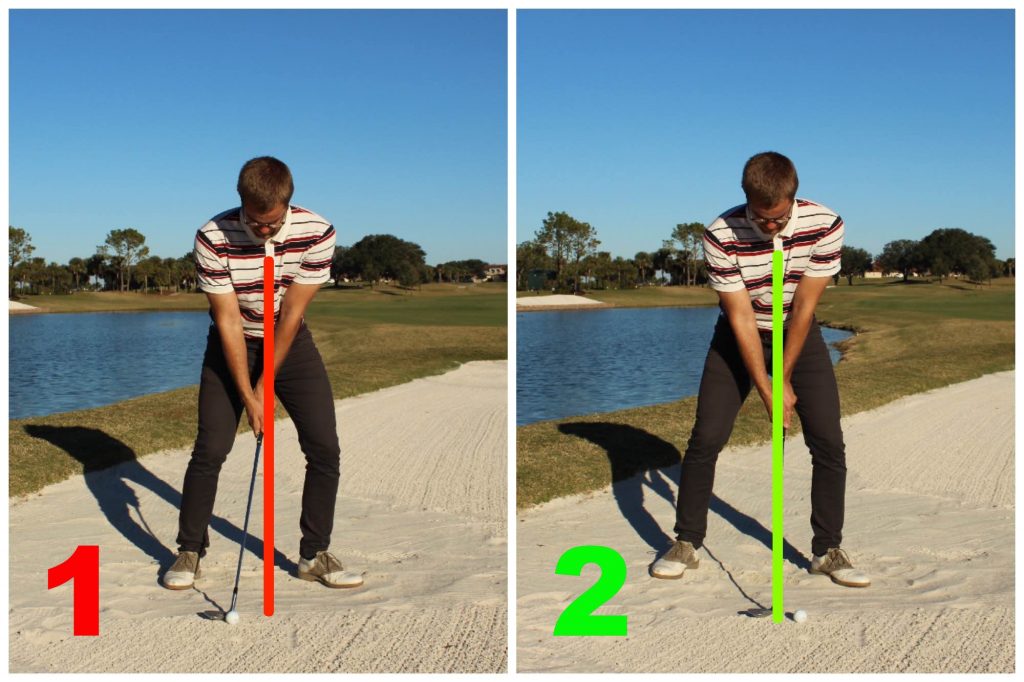 In picture 1 you will see the ball being located behind the sternum, which is NOT to prefer. The Attack Angle will probably be quite steep, and you will have a hard time making the club glide probably over the sand. In picture 2 you will see the ball just in front of the sternum which is ideal for a standart bunker shot.
In picture 1 you will see the ball being located behind the sternum, which is NOT to prefer. The Attack Angle will probably be quite steep, and you will have a hard time making the club glide probably over the sand. In picture 2 you will see the ball just in front of the sternum which is ideal for a standart bunker shot.
7. Swing back and forth on the right track
As you go back and forth, it is very important to swing to club in the right direction. But what is the right direction for the back – and downswing in a bunker shot? Look at the pictures below:
The line drawn from the shaft at setup is what we call the swing plane line. The clubhead should NEVER be below this line in the bunker! If it were to be below you would probably hit the sand way to early and then you would have to compensate for that in different ways. Picture 2 shows a swing where the clubhead swings along the plane line which is to prefer, and in picture 3 the clubhead is too far away from the player end therefor above the plane line. For many people it will fell like the clubhead is swinging away and up in the backswing , instead of a full swing movements which will be more around the body.
8. Cock that wrist
Another important element in the bunker is the wrist movement in the backswing. The wrist should be “cocking” in the backswing, creating an angle between the left forearm and the club shaft. The advantage for this is a little steeper Angle Of Attack coming into the ball and more clubhead speed.
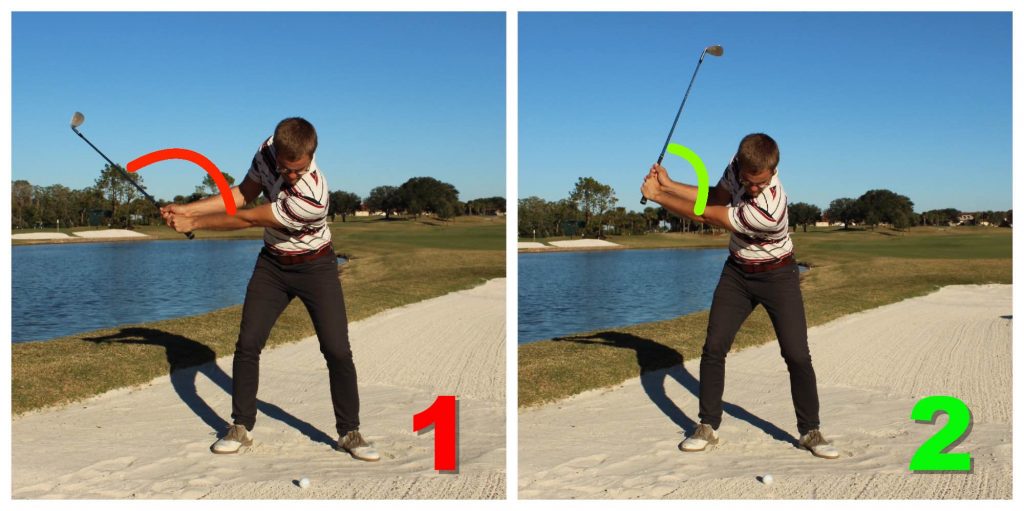 Picture 1 shows a backswing with no wrist cock. Picture 2 shows a backswing with a lot more wrist cock, which is to prefer in a bunker shot.
Picture 1 shows a backswing with no wrist cock. Picture 2 shows a backswing with a lot more wrist cock, which is to prefer in a bunker shot.
9. An open club face means a smiling players face
From setup we opened up the clubface. During the swing, it is one of our most important jobs, to KEEP it open. Both in the backswing, in the downswing, and in the follow through. The best way to do so is to keep the left wrist cupped during the whole motion, and let the left forearm rotate clickwise. Watch the pictures below, and notice the left wrist and the clubface alignments.
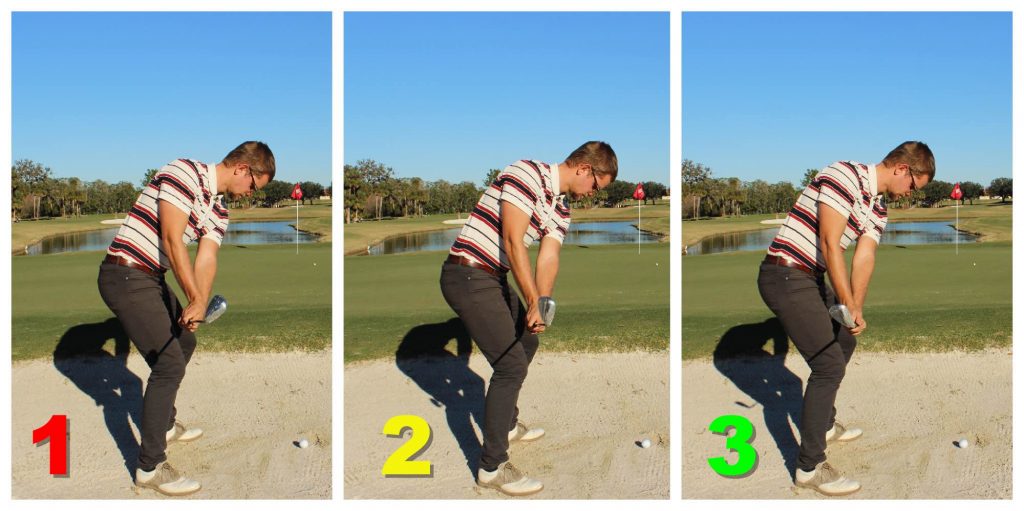 In picture 1 you will see a very closed clubface in the backswing, which usually will cause the club to dig into the sand. In picture 2 the clubface is a bit more open which is better, and in picture 3 the clubface is wide open which is very good for green-side bunkershots.
In picture 1 you will see a very closed clubface in the backswing, which usually will cause the club to dig into the sand. In picture 2 the clubface is a bit more open which is better, and in picture 3 the clubface is wide open which is very good for green-side bunkershots.
10. Speed it up solider!
With the open clubface during the swing, you can now swing the club with quite a lot of speed, without sending the ball way over the green. Actually a good amount of club speed in the bunker brings along a few advantages:
• It creates a higher trajectory on the ball-flight.
• It creates more backspin on the ball.
• It makes it easier to have the club glide over the sand instead of digging into it.
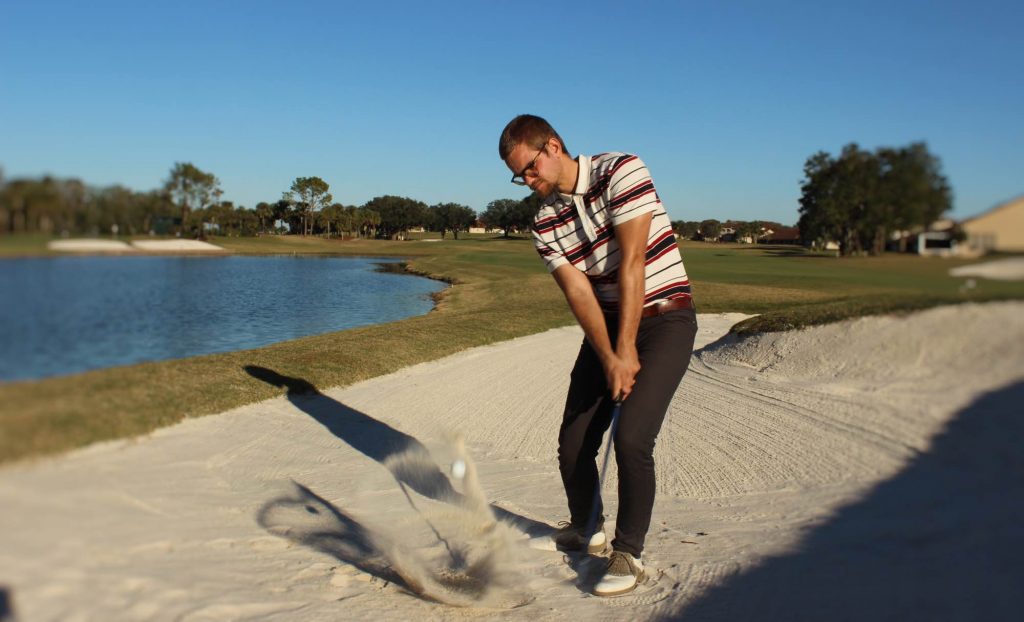 Dont be afraid to put a lot of speed on the club in the bunker. Speed is your friend!
Dont be afraid to put a lot of speed on the club in the bunker. Speed is your friend!
11. Don’t tip back!
During the swing, it is really important to keep your head still. With that I mean that the head shouldn’t be moving to much away from the target. The head is the center of the swing, and moving your head will have a HUGE effect on where and how the club hits the sand.
Don’t mistake this with looking down all the time! The head should be turning with the balls as it is hit.
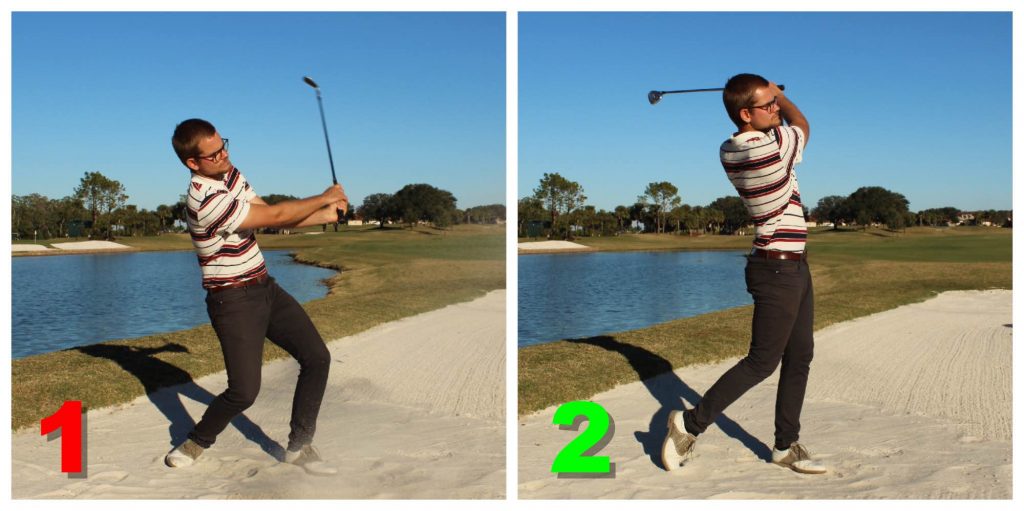 In picture 1 you will se me tipping back during the downswing, with my weight placed mainly on the back foot. This is no good. In picture 2 the weight has moved forward and is placed mainly over the lead / front foot which if to prefer!
In picture 1 you will se me tipping back during the downswing, with my weight placed mainly on the back foot. This is no good. In picture 2 the weight has moved forward and is placed mainly over the lead / front foot which if to prefer!
12. Extend my friend
During the downswing and impact zone, the body should start extending. This ensures the hands moving upwards during impact, which will give the best club/sand interaction. Imagining a full swing, how the hips and upper body is extending towards the ball, during impact and in the follow-through. The same motions should happen in a bunkershot.
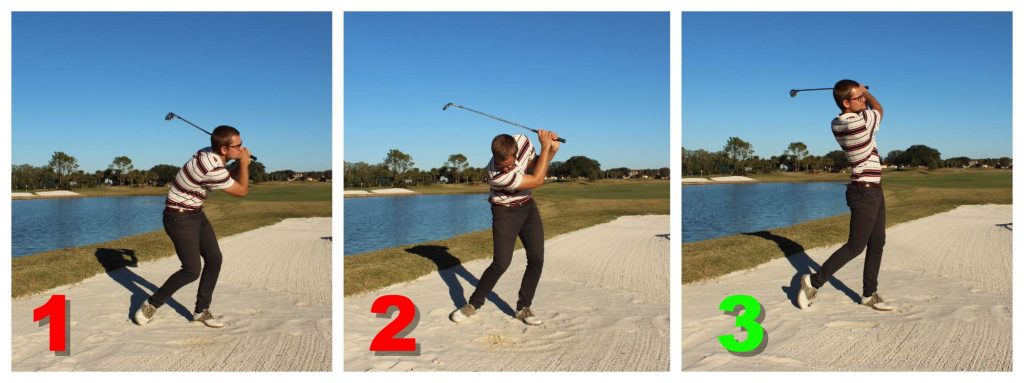 Picture 1 shows a bunkershot with no extension in the body. This is a no go! Picture 2 shows a shot where the player look down for way to long time, this limits the extension and rotation in the body. Picture 3 shows a shot where the head and body has turned and the body is in extension which is how it should be.
Picture 1 shows a bunkershot with no extension in the body. This is a no go! Picture 2 shows a shot where the player look down for way to long time, this limits the extension and rotation in the body. Picture 3 shows a shot where the head and body has turned and the body is in extension which is how it should be.
13. Control entry point in the sand
Where the club makes contact with the sand at first is extremely important, and has a major effect on the trajectory of the shot. The distance the sand is hit before the ball can vary a lot depending on the intended flight, but for a basic bunkershot the club should hit the sand about 1-2 inches before the ball.
14. Control the depth in the sand
An extremely underrated factor in bunker shots is the depth, which the clubhead reaches in the sand. If the entry point is good, but the depth is way to deep, you are never going to hit crisp bunker shots.
How do you control the depth then?
It is combination of many of the above-descripted principles. Keeping the head (centrum of swing) stable, keeping the clubface open, and extending through the impact zone are some of the most important elements in controlling the depth.
By controlling the depth of the club in the sand you will in most cases also be controlling the exit point of the club in the sand. It is important to control where the club exits the sand, because it has a major influence on the amount of sand hit during the motion, which will affect the speed of the ball and a few other factors. The length of the “turf” in the sand should be about a dollar-bill long.
15. Keep it relaxed and smooth
Lastly, all the above-mentioned concepts need to be done in a very relaxed and smooth motion. You don’t see any good bunker players being very pumped up, swinging in a out of sync motion. A bunkershot is a delicate precision maneuver, and this requires a smooth, rhythmic, and relaxed swing.
Congratulations!
You have now learned all of the 15 most important bunker shot basics, and you are ready to try out the techniques in real life! If you want to see how it looks on video, study the 2 videos below. Brett Rumford is a master from the sand, and he is demonstrating all of the above mentioned bunker shot basics.
Do you want more learning?
If you liked the principles described above, I would highly recommend you to check out 5 simple bunker setup fundamentals with Brett Rumford . Its a player analysis video where I walk you through 5 simple setup checkpoints in a bunker shot, with Brett Rumford as a model.
Feel free to share this article with your friends or family if you found it helpfull :)
Looking to improve your short game? I'm currently offering online lessons through the Skillest app with a 50% discount on your first lesson for all readers of the World of Short Game blog. Simply use the promo code "WOSG50percent" when booking your first session to get started at a discounted rate. Let’s work on your game together! ⛳️
You must be logged in to post a comment.

